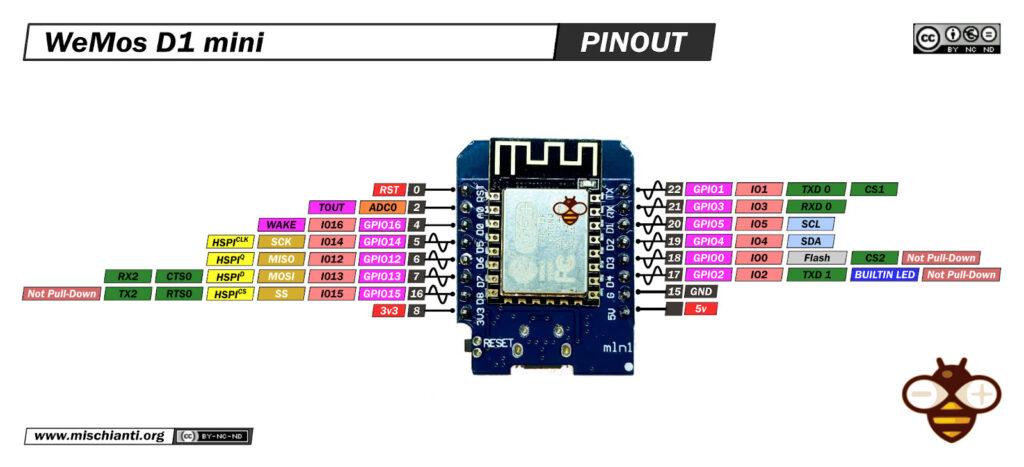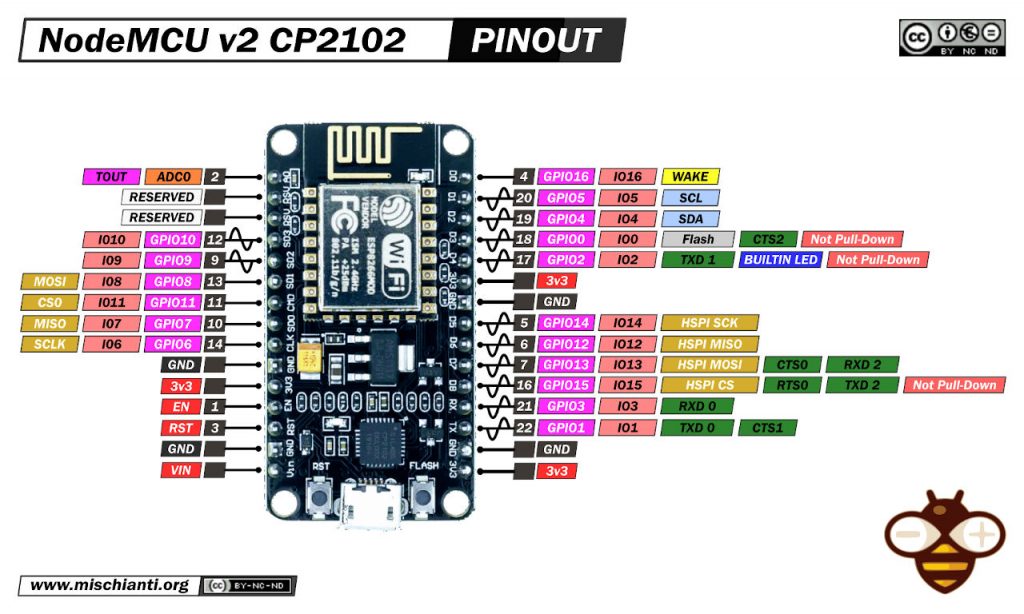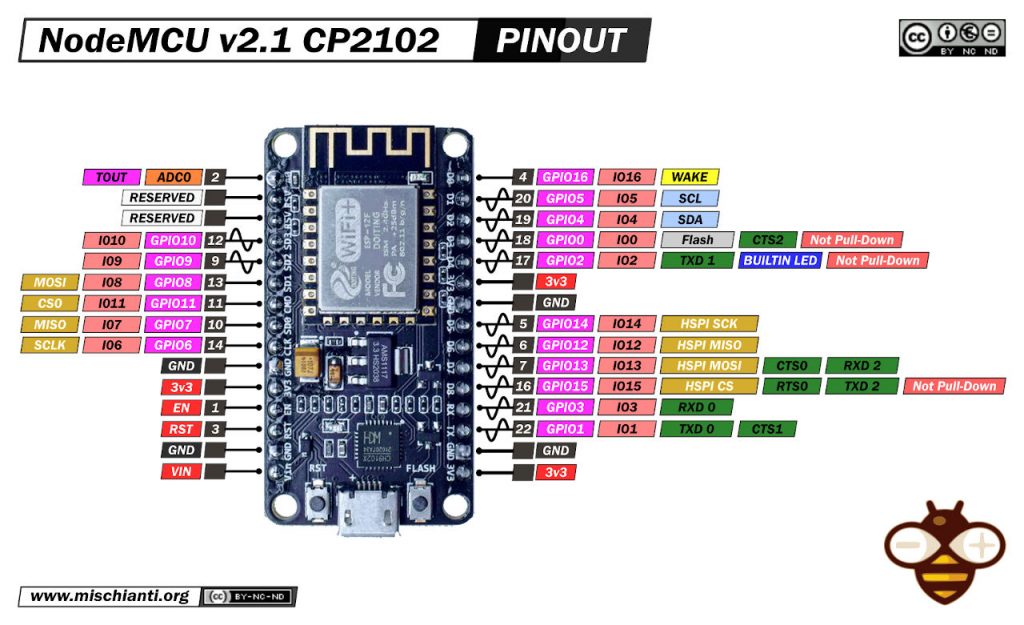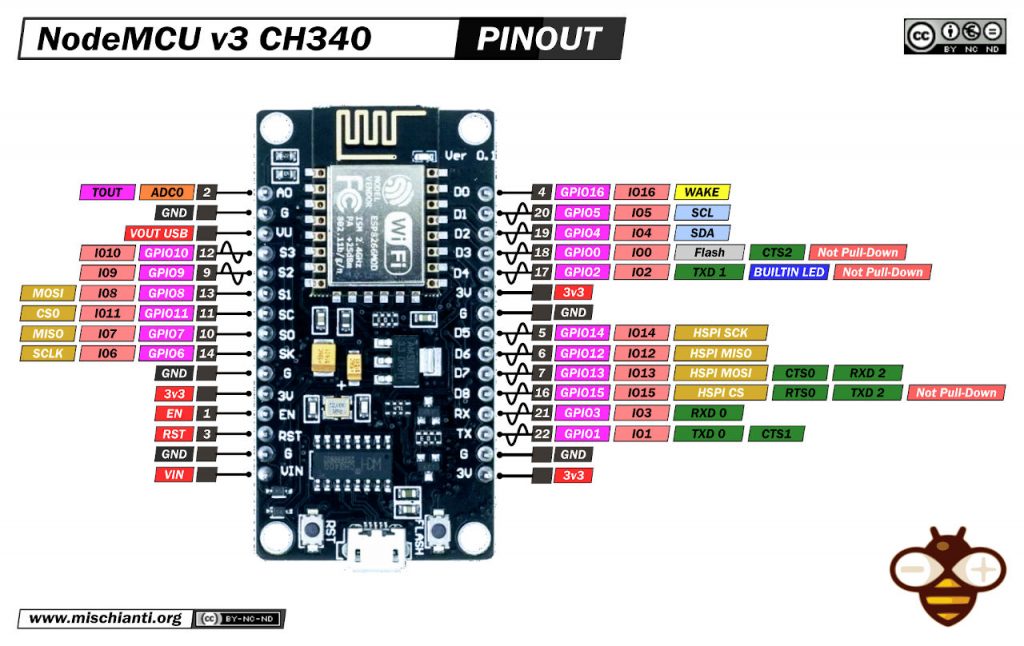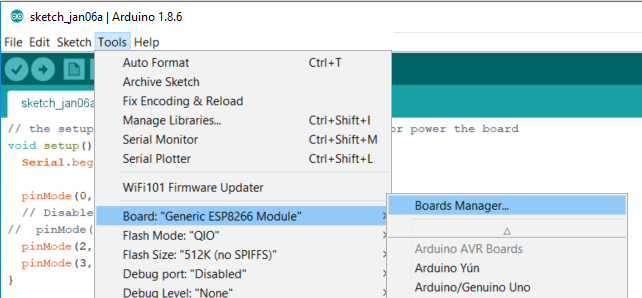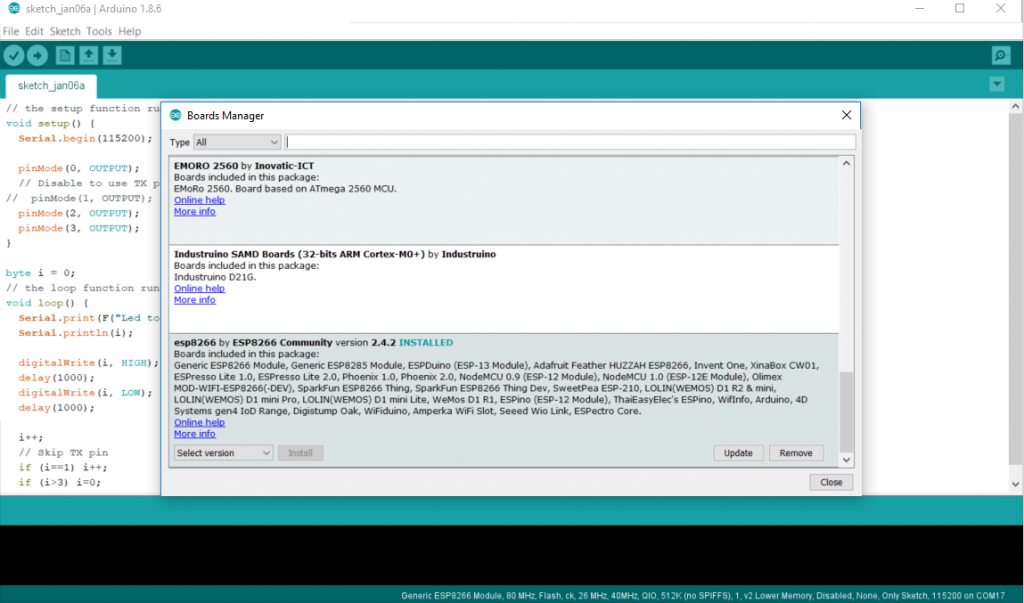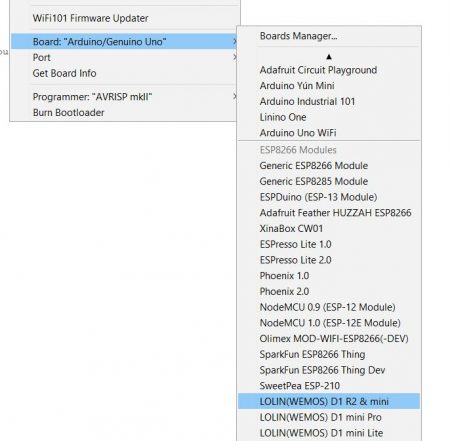WeMos D1 mini (esp8266), pinout, specs and IDE configuration – Part 1
WeMos D1 mini (esp8266) details
I like this device It’s very low cost and effective value WIFI microcontroller.
You can find It here WeMos D1 mini - NodeMCU V2 V2.1 V3 - esp01 - esp01 programmer
Specs
- Processor: L106 32-bit RISC microprocessor core based on the Tensilica Xtensa Diamond Standard 106Micro running at 80 MHz[5]
- Memory:
- 32 KiB instruction RAM
- 32 KiB instruction cache RAM
- 80 KiB user-data RAM
- 16 KiB ETS system-data RAM
- External QSPI flash: up to 16 MiB is supported (512 KiB to 4 MiB typically included)
- IEEE 802.11 b/g/n Wi-Fi
- Integrated TR switch, balun, LNA, power amplifier and matching network
- WEP or WPA/WPA2 authentication, or open networks
- 16 GPIO pins
- SPI
- I²C (software implementation)
- I²S interfaces with DMA (sharing pins with GPIO)
- UART on dedicated pins, plus a transmit-only UART, can be enabled on GPIO2
- 10-bit ADC (successive approximation ADC)
Pinouts
Wemos D1 mini
WeMos D1 mini high-resolution image
NodeMCU V2
NodeMCU v2.x high-resolution image
NodeMCU v2.1
NodeMCU v2.x high-resolution image
NodeMCU v3
I think that the interesting thing is that It has more than one Hardware Serial, so you can use Serial for communication with devices and Serial1 D4 (only Transmission) to debug.
Usage
You can download drivers for the USB chips here, check your version of D1 mini and click on drivers.
Configure your ide
Than you must configure your Arduino IDE
First you must add esp8266 url descriptor to your IDE
http://arduino.esp8266.com/stable/package_esp8266com_index.json
Go to File –> Preferences and add the url on “Additional Boards Manager URLs”
Than you must add new board in Boards Manager
The boards to select is esp8266
Now you can select LOLIN(WEMOS) D1 R2 & mini
Now you can upload your sketch.
Thanks
- WeMos D1 mini (esp8266), specs and IDE configuration
- WeMos D1 mini (esp8266), integrated SPIFFS Filesystem
- WeMos D1 mini (esp8266), debug on secondary UART
- WeMos D1 mini (esp8266), the three type of sleep mode to manage energy savings
- WeMos D1 mini (esp8266), integrated LittleFS Filesystem
- esp12 esp07 (esp8266): flash, pinout, specs and IDE configuration
- Firmware and OTA update management
- Firmware management
- OTA update with Arduino IDE
- OTA update with Web Browser
- Self OTA uptate from HTTP server
- Non standard Firmware update
- esp32 and esp8266: FAT filesystem on external SPI flash memory
- i2c esp8266: how to, network 5v, 3.3v, speed, and custom pins
- […]

